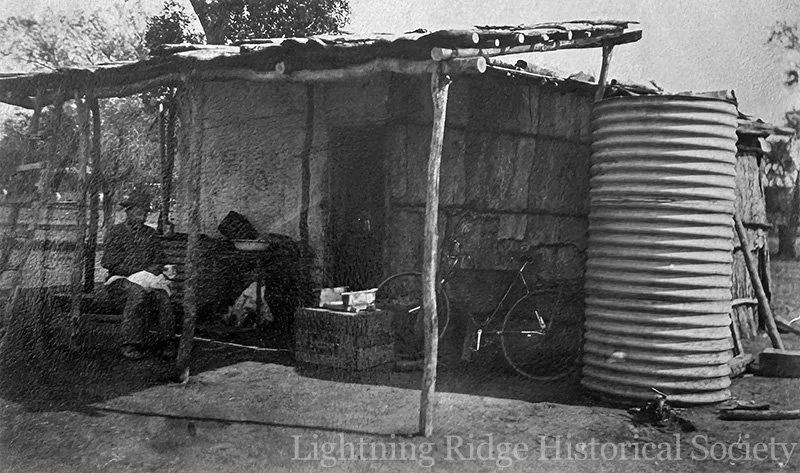Canada’s
“Canada Bill” Etheridge in his camp on The Dooley.
Canada’s is a small but productive opal field located west of Holden’s and the Three Mile, across a gully. The field became known for producing good quality black opal at a depth of around 30 feet.
The field was discovered by “Canada” Bill Etheridge. Though English by birth, Etheridge had lived in Canada and spoke with a drawl, hence the nickname. He reportedly found the field in 1917, though other accounts suggest 1911. He also worked in partnership with Jim Murray and is credited with co-discovering the Red Admiral (or Butterfly) stone around 1920. His claim was one of two notable claims on the field. The other, held by George Low and Fred Leiske (or Lisky), yielded good stones over a five-year period.
According to The Lightning Ridge Book by Stuart Lloyd, the field had produced £32,700 by 1967. Only one level, averaging 30 feet in depth.
Article: Research by Russell Gawthorpe and Leisa Carney, edited by Russell Gawthorpe. LRHS research compiled by Len Cram and Barbara Moritz. Sources: The Lightning Ridge Book, Stuart Lloyd, 1967, p. 67; Lightning Ridge - The Home of the Black Opal: Unique to the World, Gan Bruce, 1983, p. 87; Discover Opals: Before and Beyond 2000 with Surface Indications, Stephen Aracic, 1996, p. 145.

